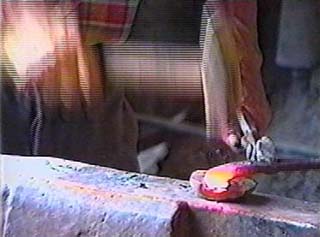PHILL NIBLOCK
224 Centre Street New York 10013 212 431 5127, 6430 Fax 431 4486
email: 102011,1400@compuserve.com

Phill Niblock is an intermedia artist using music, film, photography, video and computers. He was born in Indiana in 1933. Since the mid-60's he has been making music and intermedia performances at: The Museum of Modern Art; The Whitney Museum; Wadsworth Atheneum; the Kitchen; the Paris Autumn Festival; Palais des Beaux Arts, Brussels; Institute of Contemporary Art, London; Akademie der Kunste, Berlin; Carpenter Center for the Visual Arts at Harvard; World Music Institute at Merkin Hall; and on radio in the U.S., West Germany, France, and Belgium. He has had grants from the Guggenheim Foundation, the New York State Council on the Arts, the National Endowment for the Arts, the Creative Artists Public Service Program, the City University of New York Research Foundation and the Foundation for the Contemporary Performance Arts. He is Director of the Experimental Intermedia Foundation in New York. He has been director since 1985; an artist/member since 1968. He is the producer of Music and Intermedia presentations at EIF since 1973 (about 800 performances). He is Professor of Video and Film Production and Photography, Department of Performing and Creative Arts at the College of Staten Island, the City University of New York, l97l to present.

Phill Niblock's intermedia work addresses technical and aesthetic issues in four artistic disciplines that combine at various levels and diverge at others. His multi-layered installations and performances present simultaneous events in film and music, slides and video. In Performance the music and film or slide works and video are presented together in two possible ways: 1. An installation of several hours duration on one or more days. The music pieces are played consecutively, with several hours of work before repetition. Multiple images are shown simultaneously. 2. In a performance, several simultaneous works of music and film, or slides works and video pieces are presented, in one to three hours.

The music explores the texture of sound resulting from multiple tones in very dense tunings performed in long durations. The combination of static surface textures and extremely active harmonic movement generates a highly original music that has influenced a generation of composers. The pieces are created on tape from unprocessed recordings of precisely tuned long tones played on traditional instruments. In performance, live musicians may play, wandering through the audience changing the sound texture through reinforcement of or interference with the existing tunings.

Niblock's films are about movement, particularly the movement of people working. Filmed in non-urban environments in many countries (China, Brazil, Portugal, Lesotho, Puerto Rico, Hong Kong, the Arctic, Mexico, Hungary, the Adirondacks, Peru), the films look at everyday work, frequently agrarian or marine labor. These films are recognized internationally for their mastery of long takes utilizing clear, simple techniques that result in high resolution and extended tonal ranges. Movement is treated abstractly without reference to anthropological or sociological meaning. As in the music, a surface slowness is countered by an active, varied texture of rhythm and form of body motion within the frame, the ultimate subject matter of Niblock's films.

Excerpts from reviews:
"Phill Niblock's music and films are concerned with detail and simplicity . . . dense, imposing sound mass . . . . Sum and difference tones pile up until they sound like an orchestra of strings or an immense chorus of voices . . . one listens first to one level of detail, then to another, only gradually learning to hear everything at once." Robert Palmer, New York Times
"[Music] consisting of sustained, closely juxtaposed notes knitted together in slowly but sometimes suddenly shifting texture . . . tense, tight beats, lazily cyclic curves and floating colorational shifts induced by clashing overtone patterns." John Rockwell, New York Times
"Waves of sound roll over the audience . . . the piece began to swell in emotional intensity, but it was not overtly dramatic; the intensity of this piece was in its didactic nature . . . . As if putting your ear to a seashell, you listen and hear the roar of the familiar." Charles McCurdy, Philadelphia Inquirer
Phill Niblock
Childhood Anecdotes
Video Program
July 8, 1996
C3 OpenLab
The locations are the delta of the Duna at the Black Sea, and Transylvania.
